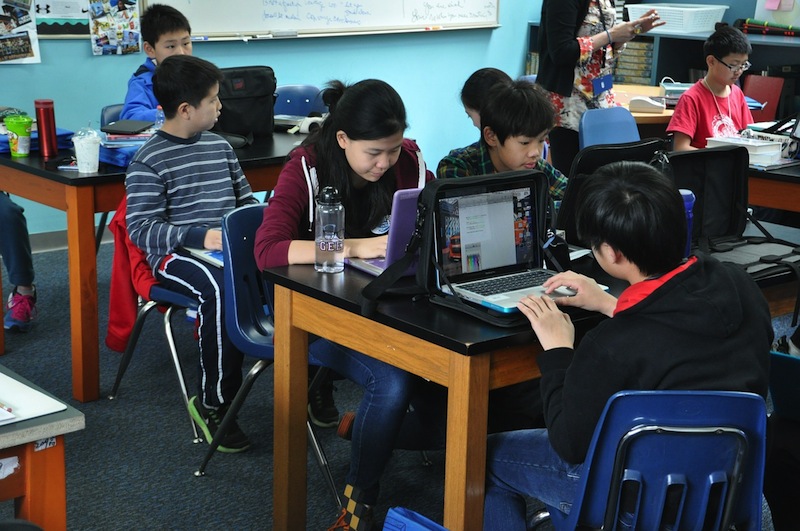
Aleexpat lives in Perth and she has carried out detailed research into how the Australian school system works. A valuable tool for all those (and there are many lately!) who plan to move to Australia with kids in tow.
Thanks to Barbaraexpat and Elisaexpat for the important comments while writing the article.
ACARA (Australian Curriculum, Assessment and Reporting Authority) is the Australian national organization that defines what students must learn at school, no matter what state they live in or which school they attend. Their task is to plan, develop and consistently update the Australian Curriculum, a detailed framework of what is taught in primary and secondary school.
Each state (Victoria, New South Wales, Western Australia, South Australia, Tasmania and Queensland) and Australian territory must implement the national curriculum, adapting and modifying it for the specific needs of its communities. This translates in a certain flexibility that school authorities can exercise when choosing how to develop the school and education system. Differences among states generally concern the starting and ending age of compulsory school, the terminology used to define tests and exams, and the choice of how many and which subjects are considered fundamental.
For a more precise framework we invite you to visit this page: https://www.acara.edu.au/curriculum/foundation-year-10
Non compulsory education is managed by AQF, Australian Qualification Framework, a programme established by the central government, which, as we’ll see later on, develops into two academical paths.
 Schools in Australia can be public (also known as government or state schools) or private.
Schools in Australia can be public (also known as government or state schools) or private.
Public schools offer free education to Australian citizens and permanent residents, however many schools ask parents to pay a contribution fee and a materials and services charge (for computers, art and science activities, physical education…). This fee is around 60 AUD in Primary School and 250 AUD in Secondary School. Families are required to pay for books, stationary and uniforms.
Students in Australia with a different type of visa (international students, visa 500, 573, 574 or 457, etc.) are generally required to pay and tuitions fees can be quite high and vary according to the length of stay, the type of visa and the student’s level of english. More detailed information can be found here TAFE International WA
Private schools can be divided into catholic schools, run by the Catholic Education Office, and other religion based schools, run by their own committees.
These schools receive funding from both the State and by the Government and, being private, they charge a fee to the students. Fees vary from school to school and we recommend you visit the school website for more information.
Private schools can be co-educational or single sex.
Compulsory education starts at around five or six years of age and finishes at 15/17 (with minor variations between states and territories), for a total of 12 years.
As Australia is in the southern hemisphere, the school year starts at the end of January and it finishes in mid December. It is divided in two semesters and both semesters are divided in two terms. Each term is about ten weeks long, followed by two weeks of holidays.
The main holidays are the Summer holidays, from mid December until the beginning of the new school year.
The Australian education system is divided into: pre-school, primary school, secondary school, TAFE colleges and Universities. This article is based on the Western Australia school system.
Pre-School
 Government pre-school education in Australia has a two years program.The first year, kindy, is for three years old children and is offered for two or three days per week and is not compulsory. The second year, pre-primary, requires a full time attendance and became compulsory in 2013.
Government pre-school education in Australia has a two years program.The first year, kindy, is for three years old children and is offered for two or three days per week and is not compulsory. The second year, pre-primary, requires a full time attendance and became compulsory in 2013.
Besides government kindergartens there are many private organisations that care for children from birth until school years on a full time basis.
In Perth the Italian-Australian Child Care Centre is well known and has a great reputation and it has been in operation since the beginning of the ’70. English is the official language but Italian is spoken and taught.
Primary School
Primary school starts at the age of six (children must have turned six by the 30th June of the school year)and lasts six years, from year one until year six.
There are eight subjects taught: english, maths, science, environment and society (which includes history, geography and economy), technical education, foreign languages, art education and physical education. Besides these subject students are also taught music, swimming (compulsory two weeks a year), dancing and gymnastics.
Recently the Western Australia education minister has released a new legislation in regards to students evaluation. The knowledge of the subject is divided into eight levels. The level that students should achieve at the end of every school year is established based on the average evaluation. Using English as an example, the student should have reached a level two in year three, between two and three in year 5, three and four in year six and at least four in year nine. Once the level is established the teachers can give their marks:
A = excellent
B = good
C = satisfactory
D = limited
E = very low
A report is given to each student at the end of every semester. In Year three, five and nine students have exams in two key subjects, english and maths. In 2008 these tests became national and they are called NAPLAN (National Assessment Program – Literacy and Numeracy) and they are conducted at the same time.
NAPLAN tests the types of skills that are essential for every child to progress through school in Australia. As many teachers don’t consider the NAPLAN test to be a relevant evaluation method it has created at lot of controversies.
Here are some distinctive and interesting aspects of the Australian school system. School, in particular at primary level, is seen as part of the community, therefore parents, local businesses and residents are often involved in supporting it. Members of the P&C (Parents and Citizen Association) take part in school meetings and help with decisions relating to school activities and education planning. Parents can take part in the daily running of the school, helping in the canteen, assisting teachers in various activities or helping with fundraising.
If you have just moved to Australia and you have school aged children get involved! It is a great way to meet people and become part of the community.
 Written homework is not often given to children in primary school, normally teachers suggest to use any spare time to read. Occasionally children are encouraged to do research related to the observation and investigation of their environment.
Written homework is not often given to children in primary school, normally teachers suggest to use any spare time to read. Occasionally children are encouraged to do research related to the observation and investigation of their environment.
During the first years of primary school children are able to partecipate in show and tell, bringing to school something of value or importance and sharing it with the rest of the class. This activity introduces children to public speaking and teaches them to share ideas and emotions and to listen.
Technology is widely used in the classroom. Most schools have interactive boards and IPads are used by students daily. Maths and English exercises are often done using online platforms (eg. Spellodrome, Mathletics) and communication between teachers and parents is also done online. Apps like ClassDojo show weekly activities, projects and students progress. Coding (computer programming) has been introduced in many schools.
High School (Secondary School)
High school runs from year 7 to year 12.
For the first three years the subjects stay the same as in primary school and at the end of year 9 students undertake the Naplan test.
From year 10 the main subjects are reduced to six. In year 12 students are taught five subjects that they choose depending on their interests and what they are planning to study at tertiary level, English is the only compulsory subject.
From year 10 students report includes comments regarding attitude, behaviour and effort of the student in each subject, beside the regular marks (as explained above).
At the end of year 10 ( at 15/16 years old) students can legally leave school. To be able to do this they will have to have full time employment, do an apprenticeship or be enrolled in a TAFE (Technical college) course. Parents must complete a form addressed to the Minister of Education to discuss these options.
At the end of year 12 students will complete the WACE (Western Australia Certificate of Education). Since 2015 this certificate is recognised at a national level by universities, technical colleges and employers.
For more information please visit The School Curriculum and Standard Authority website.
 High school students are assessed with their work on research projects, done individually or in group and with written tests. Unlike in Italy, there are no oral examinations although debating is popular to promote confidence, public speaking and critical thinking.
High school students are assessed with their work on research projects, done individually or in group and with written tests. Unlike in Italy, there are no oral examinations although debating is popular to promote confidence, public speaking and critical thinking.
In regards to Tertiary Education, the Federal Government has established the Australian Qualification Framework (AQF), divided in two academic paths, TAFE colleges and Universities.
TAFE Colleges
This educational pathway is also known as VET (Vocational Education and Training) and is includes a variety of technical colleges that provides a range of predominantly vocational courses. The courses vary in length, according to the qualification required, from Certificate, to Diploma or Advanced Diploma.
These courses generally offer the students opportunity to do training and apprenticeship while studying.
Through a TAFE course it is possible to access University.
Universities
Entry requirements to enter university vary depending on the institution and the degree you want to attend.
Most university require students to have completed the WACE examination at the end of year 12, have a good level of english and good results in the subjects chosen for their degree.
In addition university often take into consideration the student ATAR (Australian Tertiary Admission Rank) results.
University studies are divided into Undergraduate and Post Graduate.
Undergraduate generally refers to the first first three to five years at university, designed to introduce students to the knowledge base within a specific discipline. Upon completion of their undergraduate studies students will receive a bachelor’s degree and with one extra year an honour’s degree.
Postgraduate consist in a range of courses available to students who have generally completed undergraduate studies.
Here are some useful links for those interested in studying in Australia at a tertiary level:
2018 – Course Guide for International Students Studying at TAFE Western Australia
Admission requirements
University of Western Australia (International students)
Curtin University (International students)
Australian Curriculum
Department of Education and Training
Studying in Australia
Tertiary education in Western Australia




